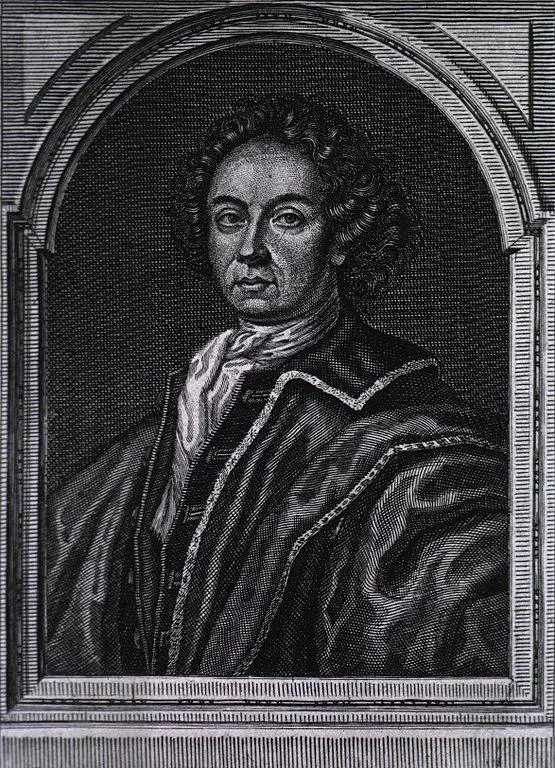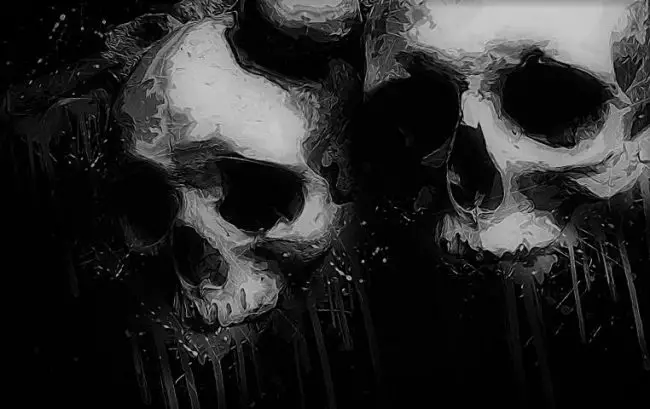Share the Lore!
By: Alex Postrado
The Supposed Demonic Life Of The Original Dr. Frankenstein
Over 200 years ago, 21-year-old Mary Shelley arguably invented the genre of science fiction with the introduction of her magnum opus, Frankenstein.
Alternatively titled, The Modern Prometheus, published on the 1st of January, 1818, this beloved classic explored themes that were in many ways as terrifying as its central character.
The novel tells of the scientific achievements and experiments of Dr. Victor Frankenstein, along with his consuming obsession with the secrets of “manifesting life“
He was willing to risk everything: his health, his relationships, and even the lives of his family and friends — all in pursuit of medical glory.
And he even reaches a point of seemingly no return when he decides to play God — going against the unspoken laws of nature and creating life from apparent death.
In the entirety of Mary Shelley’s masterpiece, it was obvious that the protagonist is as radically brilliant as he is ambitious.
And both of these fatal flaws were what ultimately drove the narrative of the book — creating a genius of a character in the process, who remains vastly remembered, especially in the horror genre, to this very day.
As interesting as all of this is, though, a possible real-life inspiration for such a striking character would definitely steal the show.
Someone who allegedly exhumed corpses for experimentation and was even once rumored to have sold his soul to the Devil.
To some, the name probably doesn’t ring a bell. But, to others, it denotes someone who is difficult not to remember.
Have you heard of the “scandalous” alchemist, Johann Konrad Dippel?
Who is Johann Konrad Dippel?
In the state of Hesse in southern Germany, lies a 13th-century hilltop fortress that has long been the center of both myth and folklore.
The Castle Frankenstein, as it is called.
An olden-time burg built sometime before 1250, commissioned by Lord Conrad II Reiz of Breuberg.

Since its construction, leading up to its eventual fall in the 18th century, the castle has housed generations after generations of the nobility.
But, among the castle’s best-known occupants, no one was more notorious than a man named Johann Konrad Dippel.
On August 10, 1673, Johann Konrad Dippel — sometimes spelled as Johann Conrad Dippel — was born at the Castle Frankenstein.
Growing up to be an innately quick-witted and curious kid, Dippel dedicated most of his younger years to learning — a trait that he carried even when he went on to study theology and philosophy at the University of Giessen somewhere in the late 1680s.
In 1693, as the fruit of all his efforts, Dippel received his Master’s Degree in Theology. And around the same time, he published numerous doctrinal works under the moniker Christianus Demócritus.

It was in these works that Dippel continued to exhibit the profundity of his brilliance. And soon, it became obvious that his scholastic background was nothing but preparation for his later exploits.
By the time Dippel was in his mid-20s, he was already “raising hell” by pillorying the papacy.
When he reached his 30s, he was devoting time to alchemy, all the while dabbling with the practice of dissecting animals.
All of these exploits earned Dippel followers and critics alike — making him a figure much viewed in a polarizing fashion by almost all of Europe.
This went on for most of Dippel’s later life and German author Johann Heinrich Jung was witness to how Dippel allegedly went from a gifted, young theologian to a man who, toward the end of his life, “lost his faith altogether after years of bitter disputes with other Christian leaders”.
One such dispute happened around 1700 with the Reformed Court Preacher Conrad Broeske who declined the publishing of Dippel’s work, titled The Scourging Papacy of the Protestants.
Furthermore, at one point in his life, Dippel even went as far as to say that Christ is an “indifferent being“ and he soon found himself increasingly invested in the natural philosophical tradition of alchemy.
During this period, the name Christianus Demócritus was showing up more and more in works and treatises related to chemistry, mathematics, and philosophy. But, the strange man behind it, Johann Konrad Dippel, was becoming somewhat less and less real — even growing “folkloric in nature“.
The Experiments that Immortalized His Name
It was true — Dippel was quite the controversial guy. And his adventurous and unconventional ways only added to his rather troubled persona.
It is said that he had problems managing his money.
Being the man of notoriety that he was, instead of learning how to better handle his finances, he resorted to selling formulas and elixirs that he claimed would do incredible — yet often unbelievable — things.
There was a time when Dippel purportedly tried to buy Castle Frankenstein in exchange for his newly discovered formula, simply known to many as “Dippel’s oil” or “bone oil“, as it was made from the destructive distillation of bones.
According to him, this formula was the peak of every alchemist’s dream: the elixir of life.
In simplest terms, the elixir of life is a potion that grants its drinker immortality or eternal youth.
If Dippel’s formula was the real deal, it would have given him not only the Castle Frankenstein but also the fame and the fortune of a lifetime. Yet, during the period, people were doubtful of the alleged powers of Dippel’s oil, and his offer to purchase the burg with it was eventually turned down.
Interestingly, it was not the last time history recorded Dippel’s stunts.
Between 1704 and 1706, Dippel worked with pigment and dye producer Johann Jacob Diesbach, contaminating their mixtures with bone oil and accidentally creating a blue pigment known today as Berliner Blau, Preussisch Blau, or more popularly, Prussian blue.
In a time when blue pigments were neither affordable nor easily accessible, Dipple and Diesbach’s invention was monumental!
And this furthered Dippel’s reach and popularity across Europe.
In his lifetime, Dippel’s unorthodox ideas and practices — be it questionable or not — gave rise to tons of strange stories and rumors about him.
There were records claiming that he was once imprisoned for seven years due to heresy!
His time outside of jail, on the other hand, was said to have been spent in his frequent dissection sprees. The by-products of these were what Dippel used in both his elixir of life and a potion he averred to be “the means to exorcise demons“.
Those experimental highlights were written in Dippel’s dissertation, Maladies and Remedies of the Life of the Flesh — along with a section mentioning his belief in the practice of transferring souls from one cadaver to another by the use of a funnel.
Back in his time, soul-transference with corpses was running pretty rampant among alchemists. But, scholars from more recent years assert that Dippel’s involvement in practices like this is only a modern-day concoction.
The list of eyebrow-raising rumors concerning Dippel extends far and wide — with the entries only getting progressively disconcerting.
One local minister accused Dippel of robbing graves in pursuit of bodies to experiment on.
Other stories allege that Dippel’s use of nitroglycerin during one of his alchemy-driven days resulted in the destruction of a certain tower at the Castle Frankenstein.
There were also rumors telling of how Dippel was driven out of his own town for his anomalous activities.
And one where Dippel was claimed to be fraternizing with the Devil in exchange for secret knowledge!
For the most part, historians maintain that these details of Dippel’s life were only part of the myth that was placed on him and which he ultimately decided to live out.
Relying on his “dark sorcerer” image and even actively perpetuating the spread of the rumors to broaden his audience and fuel his prominence.
Real-Life Frankenstein?
In 1733, 60-year-old Dippel penned a pamphlet announcing what could have been his last breakthrough: an elixir that would supposedly keep him alive until the age of 135.
Unfortunately for him, just a mere year later, he died — probably due to either stroke or poisoning — at Castle Wittgenstein near the north of Rhine.
This physical death, however, did not prevent Dippel from living on as part of the vast repertoire of legends the world has in its archives.
Of course, this was largely thanks to Dippel’s reputation when he was still alive, which Swedish theologian Emanuel Swedenborg — one of Dippel’s disciples-turned-critics — described as “bound to no principles“, with Dippel being the “most vile devil who attempted wicked things”.
But, basically, Dippel’s name remained in infamy hundreds of years after his passing.
This compelled speculators of later centuries to assume that Dippel was — in fact — the inspiration for Mary Shelley’s character, Victor Frankenstein.

Radu Florescu was the first to propose this theory in his 1975 book, In Search of Frankenstein. There, he states that the Shelleys — Mary and her husband, Percy — might have heard of Dippel’s distinctively legendary life from the locals during their visit at the Castle Frankenstein around the early 1800s.
Other historians, on the contrary, believe that the Dippel story was passed to Shelley by her stepmother, Mary Jane Clairmont — reputed translator for Grimm’s Fairy Tales — who was said to have initially heard of Dippel from Jacob Grimm after his travel around the villages near Castle Frankenstein.
Over time, more speculations also started to come up as to whether or not Mary Shelley indeed used Dippel as the model for her iconic character.
Though, if we are being honest, most — if not all — of these claims are tenuous at best.
Lacking historical validity and substantial evidence to match, the connection between Dippel and Victor Frankenstein appears only somewhat coincidental.
In fact, scholars say that it is more plausible that Shelley based the character off of inventor Benjamin Franklin and his experiments with electricity.
But, as we know it, the name Johann Konrad Dippel stuck — likely through the seemingly endless pop culture references placing him as “Frankenstein’s prototype“, springing from his shaky relations with the Church, unconventional beliefs in life, contentious experiments, and even his rumored dealings with the Devil.
References:
Saints And Sinners: Johann Konrad Dippel Germany’s Most Monstrous Castle Day 13: Castle Frankenstein: Birthplace Of A “Vile Devil” The Real-Life Places That Inspired Frankenstein Did A Real-Life Alchemist Inspire Frankenstein? Go Inside Frankenstein's Castle Maladies And Remedies Of The Life Of The Flesh: The Dissertation Of 'dr. Frankenstein' Johann Dippel
